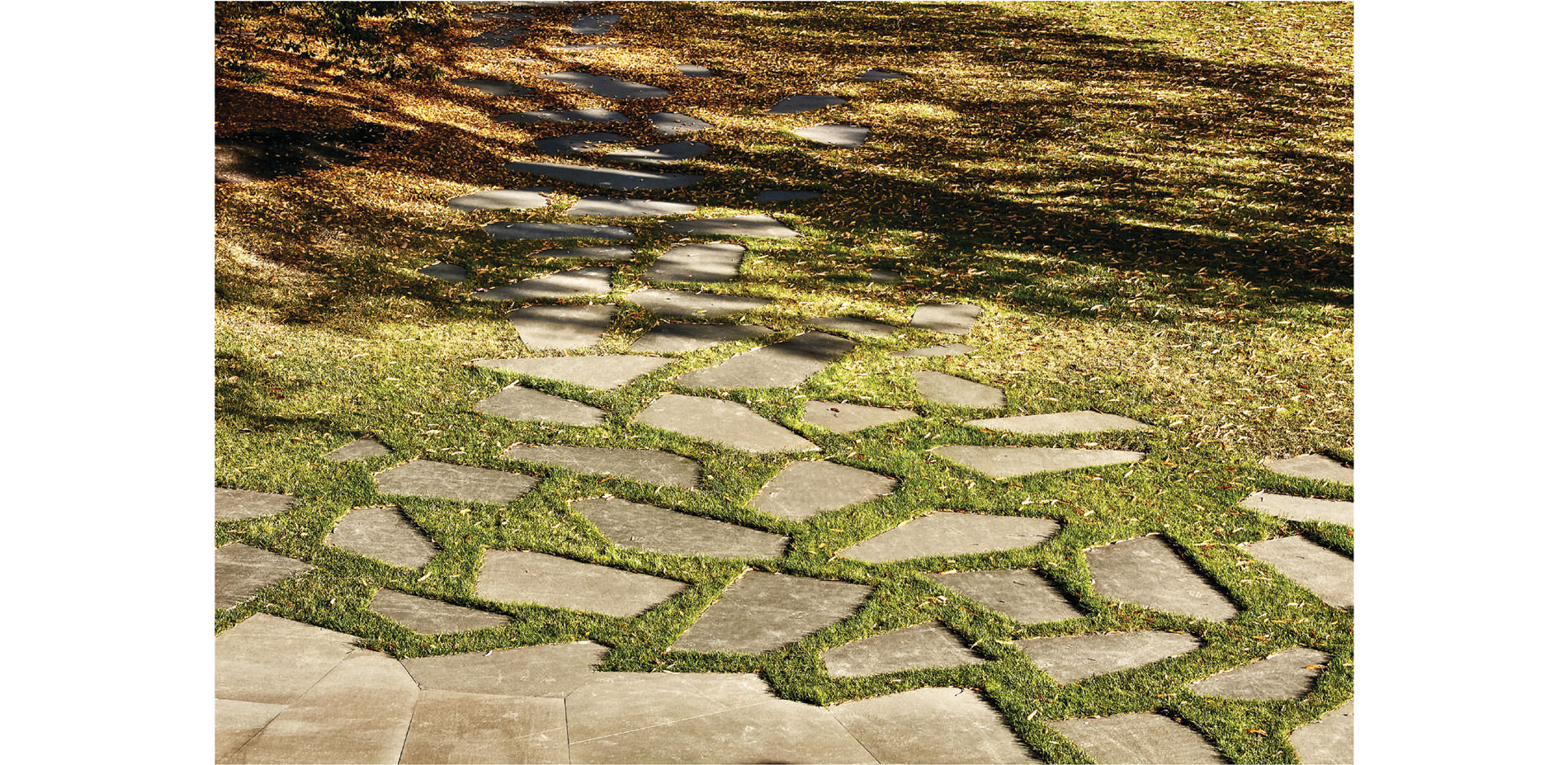Abstracting Morphology
Honor
Residential Design
New York, NY, USA | HOLLANDERdesign | Landscape Architects
It’s in a grove of gingkoes. Consider how the stone in the path is cut to abstract the falling gingko leaves, giving an Asian feel.
- 2017 Awards Jury
PROJECT CREDITS
- Edmund D. Hollander, FASLA
- Steven Holl Architects
PROJECT STATEMENT
The sheer cliffs that define the unique geologic character of this region, began 200 million years ago with the retreat of the glaciers at the end of the Triassic period. Ice flows melted and fractured, sloughing off the uppermost layer of sedimentary sandstone exposing the underlying diabase sill to a freeze-thaw cycle that ultimately created the escarpment’s vertical crevasses. It is the textured, extruded remnants of this geologic rarity – the grooved basalt cliffs and forested talus slopes – that inspired the design team’s minimalist approach to this modern residential landscape.
PROJECT NARRATIVE
The angled concrete residence sits atop the precipice of a bluff, maximizing views to frame fissured rock faces in the distance. Existing stately deciduous shade trees – a Willow Oak, Fern Leaf Beech and three Ginkgos – were carefully protected throughout construction in a strategic effort to preserve the spirit of place and anchor a sense of human-scale surrounding the home.
Hardscape elements take the form of irregular polygons and angled lines arranged in a seemingly chaotic configuration to abstractly evoke the concepts of entropy and evolution. Walkways are composed of 4, 5 or 6-sided black basalt pavers laid out in a unique, non-repeating pattern that breaks apart from the whole into erratic fragments beneath the existing trees. No two stones are alike. As the grade drops off toward the pool house, the stone transitions to linear basalt risers set at random angles with ends that tie into the slope as if their purpose is to pin and stabilize the hillside, protecting it from the forces of attrition.
The site’s terrain is also magnified at the property’s edge where a high solid glass fence in a frosted finish undulates continuously with the peaks and valleys. When viewed from a distance, the opaque white line reads as an extruded register of the extreme topography ever-present in this region.
Weeping varietals of Blue Atlas and Alaskan Cedars, Beech, and Katsura punctuate the hillsides around the home. Distinguishable by their contorted, oddly-shaped habit, these specimens were selected for their abnormal expression of random recessive phenotypic variations. A grove of Ginkgos stand tall as an entry accent. Ginkgos were also selected for an extraordinary quality -- much like the cliffs that rise in the distance, they’re the only living fossil from 200 million years ago still in existence.














